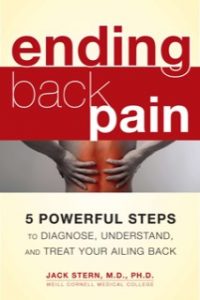Robert L. Dilenschneider. Decisions. Citadel P, 2020.
Robert Dilenschneider has authored a number of books that could generally be categorized as career advice or, to use the current popular term, life coaching. Decisions follows in that line, but here he offers his coaching mostly through example. The subtitle tells us how: Practical Advice from 23 Men and Women who Shaped the World.
This is not so much a hagiography—indeed, a few of the individuals may have made questionable decisions—but illustrations of how one or two choices in a person’s life may affected the lives of many.
The decisions come from an eclectic group. The earliest of note is Hannibal’s decision to attack Rome from the north by crossing the Alps. Though not quite successful, this strategy showed both Rome and Carthage that things were not as they seemed. Though the book does not mention it, I seem to recall that Napoleon’s own successful campaigns crossing the Alps got some of their inspiration and strategies from Hannibal’s.
The most recent significant decision among the twenty-three is from Malala Yousafzai, the then-teenaged Pakistani girl who was shot by the Taliban for going to school. All the decisions noted in the book were not easy but came from trials of one kind of another.
Two that Dilenschneider chose are two whose stories end up intertwining and probably are two of the most historically significant—Gutenberg and Luther. Details of Gutenberg’s life are a little sketchy, but he did invent the moveable type printing press. While he ultimately did not make much money from his invention, his invention spawned the modern world.
Dilenschneider notes that a century earlier, John Hus had taught many of the same things Luther was teaching, but there was no printing press then, and Hus became isolated and his followers were limited geographically. Luther had the advantage of the printing press. Indeed, his Ninety-Five Theses were simply a summary of questions he had about the sale of indulgences and the meaning of the Gospel shared with his bishop until someone translated them and published them.
The Protestant Reformation and the printing press together would give rise to the promulgation not only of the Bible and Biblical knowledge, but the scientific method and the rise of the scientific revolution. (Most Westerners saw these two things going hand in hand until the materialism of the nineteenth century began to try to divide the two.) We note that other explorers from Europe had “discovered” America before Columbus, but with the printing press, Columbus’s discoveries could be publicized all over Europe.
A few portraits are tender. Marie Curie, we are told, suffered from depression after her husband Pierre died. Eventually, though, she decided to continue their research and as a result, not only made more scientific discoveries and received a second Nobel Prize, but the Curie Foundation continues to contribute to scientific research, especially in the study of cancer and its treatments.
There are vignettes of famous businessmen, too. One notable decision came from Henry Ford. Yes, Ford was the first to use the assembly line (inaugurated by Eli Whitney) for automobile manufacture. However, Dilenschneider noted that For made what ultimately may have been a more significant decision in 1913 to double the pay of his workers.
This accomplished several things. It made his workers more loyal so he did not have to worry much about worker turnover. It made his laborers wealthy enough that they could afford, among other things, one of his cars. It also probably made the United States less susceptible to Communism and Fascism because workers there had the possibility of raising their economic status without the interference of government.
Decisions reminded this reviewer of President Kennedy’s Profiles in Courage. Here, most of the decisions made were somewhat radical and outside the received wisdom of the time and culture. Decisions includes sections on Politics, Business (like Ford), and Science (like Marie Curie) plus one called “Breaking Boundaries.” This includes difficult decisions that indicated a shift or potential shift in cultures.
Some clearly had a long-term effect like Luther’s theses and Lincoln’s Emancipation Proclamation. Some like Malala’s remain to be seen. Still, all of these seem to show a human desire to learn what is true and an innate desire (what the Declaration of Independence calls an unalienable right) for liberty.
Where possible, Decisions notes the roots of the decision-makers. Joan of Arc, for example, got the attention of the French king only because he was desperate. Luther had gone against his father’s wishes of becoming a lawyer by deciding to serve God as a monk and priest. Malala, on the other hand, had a father who himself courageously promoted the education of women in his Islamist culture.
Decisions is a fascinating collection of sketches whose stories will get the reader to think.
